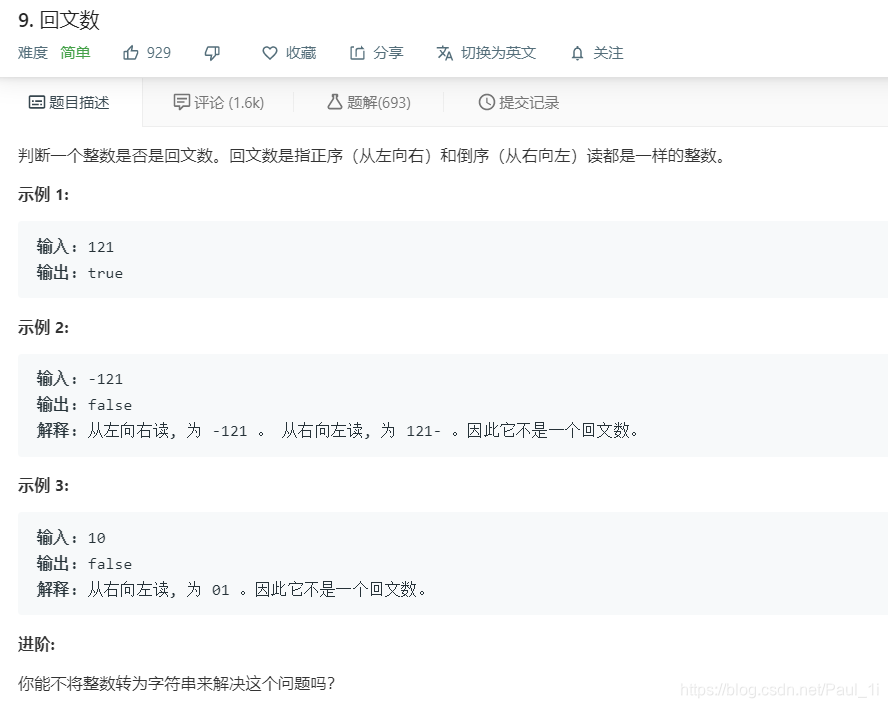leetcode做题记录0009
本文共 756 字,大约阅读时间需要 2 分钟。
leetcode 0009
说明
只是为了记录一下,不求多快,也不深究。
会简要描述思路,代码中不写注释。
如碰到不会做的用了别人代码会在博客中标出。
题目描述

结果

思路
把数字每一位放到一个数组里,然后搞两个游标i,j分别从数组头和尾向中间遍历。
碰到num[i]!=num[j]的直接false。
遍历完了还没return false的话就return true。
代码
class Solution { public boolean isPalindrome(int x) { if(x<0) { return false; } if(x>=0&&x<10) { return true; } int[] num = new int[10]; for(int i=0;i<10;++i) { num[i] = -1; } int idx = 0; while(true) { num[idx++] = x%10; x /= 10; if(x == 0) { break; } } for(int i = 0,j = idx - 1;i <= j;++i,--j) { if(num[i]!=num[j]) { return false; } } return true; }} 转载地址:http://brhe.baihongyu.com/
你可能感兴趣的文章
mysql5.5和5.6版本间的坑
查看>>
mysql5.5最简安装教程
查看>>
mysql5.6 TIME,DATETIME,TIMESTAMP
查看>>
mysql5.6.21重置数据库的root密码
查看>>
Mysql5.6主从复制-基于binlog
查看>>
MySQL5.6忘记root密码(win平台)
查看>>
MySQL5.6的Linux安装shell脚本之二进制安装(一)
查看>>
MySQL5.6的zip包安装教程
查看>>
mysql5.7 for windows_MySQL 5.7 for Windows 解压缩版配置安装
查看>>
Webpack 基本环境搭建
查看>>
mysql5.7 安装版 表不能输入汉字解决方案
查看>>
MySQL5.7.18主从复制搭建(一主一从)
查看>>
MySQL5.7.19-win64安装启动
查看>>
mysql5.7.19安装图解_mysql5.7.19 winx64解压缩版安装配置教程
查看>>
MySQL5.7.37windows解压版的安装使用
查看>>
mysql5.7免费下载地址
查看>>
mysql5.7命令总结
查看>>
mysql5.7安装
查看>>
mysql5.7性能调优my.ini
查看>>
MySQL5.7新增Performance Schema表
查看>>